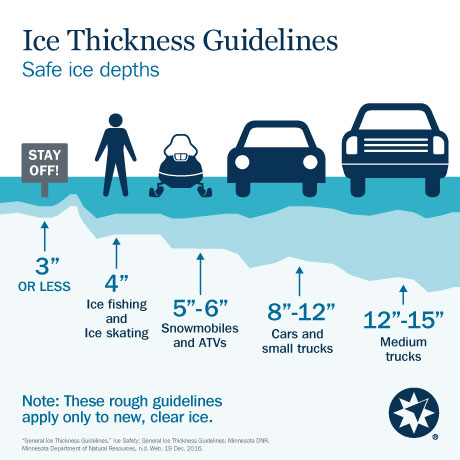Due to the lockdown COVID-19 rating for our area, opportunities for recreational indoor ice usage have been minimized, resulting in users looking for alternative ways enjoy ice-related recreation.
The Town of Bracebridge would like to remind residents and visitors that ice on lakes, rivers and ponds may not be safe for activities.
Read the following tips for ice safety to understand the factors that determine what ice is safe ice.
Many factors affect ice thickness including, type of water, location, the time of year and other environmental factors, such as:
• Water depth and size of the body of water;
• Currents, tides and other moving water;
• Long periods of time where the temperature has not been sufficiently cold enough to create and maintain a consistent ice layer;
• Chemicals, including salt;
• Fluctuations in water levels;
• Logs, rocks and docks absorbing heat from the sun; and
• Shock waves from equipment traveling on the ice.
If you are unfamiliar with a particular waterway or any of the above factors in relation to it, you should not go onto the ice.
Ice Colour in Relation to Ice Strength
The colour of ice may be an indication of its strength. For example, clear blue ice is strongest. White opaque or snow ice is approximately half as strong as blue ice. Opaque ice is formed by wet snow freezing on the ice. Gray ice is unsafe. The grayness indicates the presence of water.
Ice Thickness Recommendations
The Canadian Red Cross provides the following ice thickness recommendations for specified activities:
• 15 cm for walking or skating alone;
• 20 cm for skating parties or games; and
• 25 cm for snowmobiles.
If ever in doubt about ice thickness and/or strength DO NOT GO ONTO THE ICE.
If You Fall Through Ice
If you fall through ice and you are by yourself:
• Call for help.
• Resist the immediate urge to climb back out where you fell in. The ice is weak in this area.
• Try to relax and catch your breath. Turn yourself toward shore so you are looking at where you entered onto the ice. The ice is more stable close to shore.
• Reach forward onto the broken ice without pushing down. Kick your legs to try to get your body into a horizontal position.
• Continue kicking your legs, and crawl onto the ice.
• When you are back on the ice, crawl on your stomach or roll away from the open area with your arms and legs spread out as far as possible to evenly distribute your body weight. Do not stand up! Look for shore and make sure you are crawling in the right direction.
If you witness somebody fall through ice:
• Rescuing another person from ice can be dangerous. The safest way to perform a rescue is from shore.
• Call for help. Consider whether you can quickly get help from trained professionals (police, fire fighters or ambulance) or bystanders.
• Check if you can reach the person using a long pole or branch from shore – if so, lie down and extend the pole to the person.








